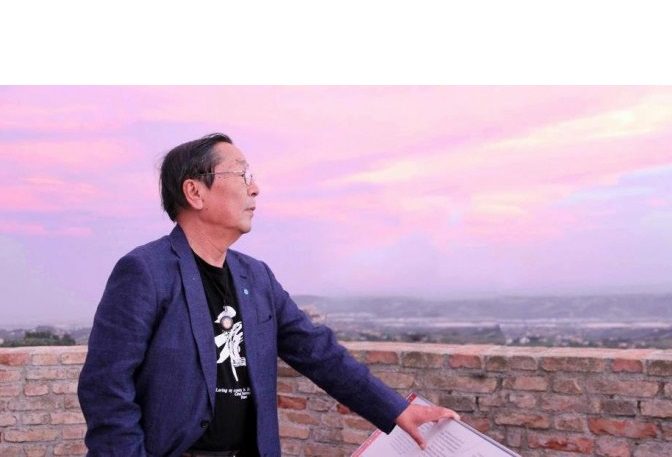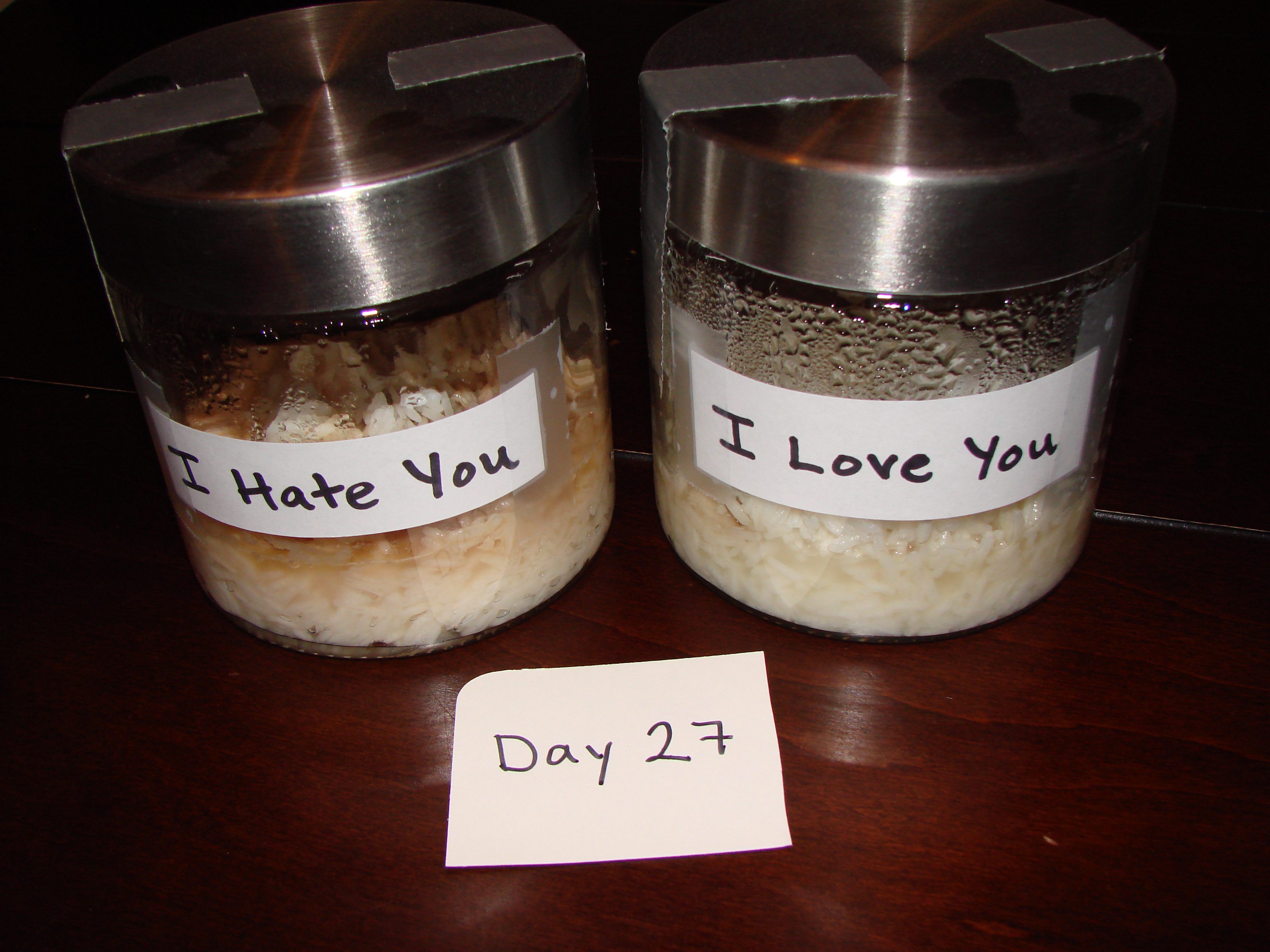“Life is love which is a gift from God and parents, and death is gratitude for going to a new dimension.” – Dr. Masaru Emoto
Dr. Masaru Emoto passed away Friday in Japan. He was 71. The scientist famously proved how human consciousness affects the molecular structure of water.
As a man, he dedicated his entire life teaching and serving others in his work. And, he never forgot who he was doing it for, even in death. According to those close to him, his last word was “Arigato” – “Thank You” in Japanese. His close friends believe he was thanking his entire community of supporters whose lives have been changed by his teachings.
Born in Yokohama, Japan on July 22, 1943, Dr. Emoto wore many different caps – businessman, scientist, philanthropist, author, and entrepreneur. His accomplishments, especially his studies in alternative medicine, are impressive. He founded his company in Tokyo at the age of 43. Then, he began to rigorously study the structure and foundations of water in the mid-1990s.
It was from these studies that resulted in Emoto eventually becoming the renowned, alternative scientist who used his advanced photographic techniques to demonstrate the molecular changes in water that resulted from human interaction. In doing so, Dr. Emoto impacted many people’s views on the power and effects of consciousness on our environment.
Dr. Emoto’s Early Work
Dr. Emoto once stated: “Water is the mirror that has the ability to show us what we cannot see. It is a blueprint for our reality, one which can change with a single, positive thought. All it takes is faith, if you’re open to it.” Emoto expanded on the traditional view of energy to include the energy that is created through our thoughts – specifically how these thoughts can alter the physical reality of the universe.
Emoto called this phenomenon ‘Hado’ – meaning “wave” and “move”. Hado is defined as “the intrinsic vibrational pattern at the atomic level in all matter. The smallest unit of energy.” Emoto further postulated that this energy is based on human thought and consciousness.
Hado goes further, stating that all phenomena are based on resonating energy. By changing the vibrations – which we create through our thoughts – we can change the substance. Emoto then set out to substantiate his theories on Hado and to teach the theories to others.
The 1990’s
Through the 1990s, Dr. Emoto performed a number of experiments focusing on the effects of human interaction, such as the environment, music, prayers, and words on the crystalline structure of water. For his experiments, Emoto hired photographers to snap pictures of the structure both before and after being exposed to the interaction.
His experiments included the difference in the crystalline structure of water before and after prayer, from a polluted and clean lake, and from negative (i.e. “You make me sick” and “Adolf Hitler” and positive phrases (i.e. “Thank you” and “Love and appreciation”). When viewing the images, the differences in aesthetics and symmetry of the water’s structure is clear – the “before” images portray dark and almost bacterial-like constituency, while the “after” pictures show a beautiful, snowflake-like image – nearly perfect and without blemish of any kind.
Lake Biwa Experiment
In another experiment on July 25, 1999, Dr. Emoto held a gathering of around 350 Japanese citizens who had all offered their prayers for Lake Biwa – the largest freshwater lake in Japan. At the time of the gathering, Lake Biwa was a polluted and putrid-smelling mass of water. Citizens often complained of the horrendous smell – the by-product of a genus of algae called ‘kokanada’ which also covered the once-beautiful lake.
The Japanese believed that this water needed to be purified, and the people gathered on the shores of Lake Biwa with the full intention to use the power of Hado and Kotodama (the spirit of words) to do so. The words offered on that day included the “Great Declaration,” which “(utilizes) the limitless energy filling the universe…a powerful statement to actualize world peace.” In Japanese culture, these words are thought to spread to penetrate the surrounding elements with fulfillment and happiness.
About a month after the prayers were offered, a major newspaper in Japan – The Kyoto Shinbun – declared that complaints about the lake had drastically decreased, with notable improvement in the water’s condition and the disappearing of the foul odor.
Dr. Emoto was the first one to realize that the conventional scientific community would likely not accept the results of neither his theories nor his experiments. Emoto fully expected this and was prepared when accused of manipulating his water images to coincide with his theories. When asked about these accusations,
Emoto stated:
“This is one of the more difficult areas to clarify. However, from continuing these experiments we have come to the conclusion that the water is reacting the actual words. For example, for our trip to Europe, we tried using the words “thank you” and “you fool” in German. The people on our team who took the actual photographs of the water crystals did not understand the German for “you fool”, and yet we were able to obtain exactly the same kind of results in the different crystal formations based on the words used.”
When asked to further elaborate on what kinds of words created clear, large clusters in the water’s structure, Emoto replied:
“Slang words like “you fool” destroy clusters. You would not see any crystals in these cases. Negative phrases and words create large clusters or will not form clusters, and positive, beautiful words and phrases create small, tight clusters.”
The Famous Rice Experiment
Despite the opposition, Dr. Emoto persevered and created many more experiments, including the infamous “rice experiment,” in which two jars containing cooked grains of rice were submerged in water and then subjected to both positive and negative phases.
In one of these experiments, schoolchildren, not associated with Dr. Emoto in any way, were asked to repeat positive and negative phrases to the jars every time they passed by. After 30 days, the jar with the positive phrases showed little physical change while the jar with negative comments contained mold and was clearly rotting. One person, curious if they could achieve the results independently, conducted their own experiment with similar results.
Throughout his life, Dr. Emoto gave as much (if not more) credence to the power of positive thinking and faith in our relationship to the physical universe than anyone else before him. He never sought acclaim or recognition for his studies, humbly continuing his work while graciously accepting and responding to any criticism.
Dr. Emoto was as insightful as he was prominent and as humble as he was successful. He produced a body of work that changed many people’s thinking on the power of our consciousness and the importance of thinking positively, despite any difficulties that we may face. His friends and colleagues attest to his honest and kind-hearted nature while fervently defending his integrity and good intentions.
This tribute to Dr. Emoto is well-deserved. Our world has lost a truly great man, and it seems fitting to end the tribute with more insightful words from Dr. Emoto himself. Arigato, Dr. Emoto.
“What you really know is possible in your hearts is possible. We make it possibly by our will. What we imagine in our minds becomes our world. That’s just one of the many things I’ve learned about water.”


















